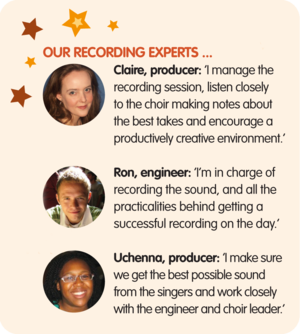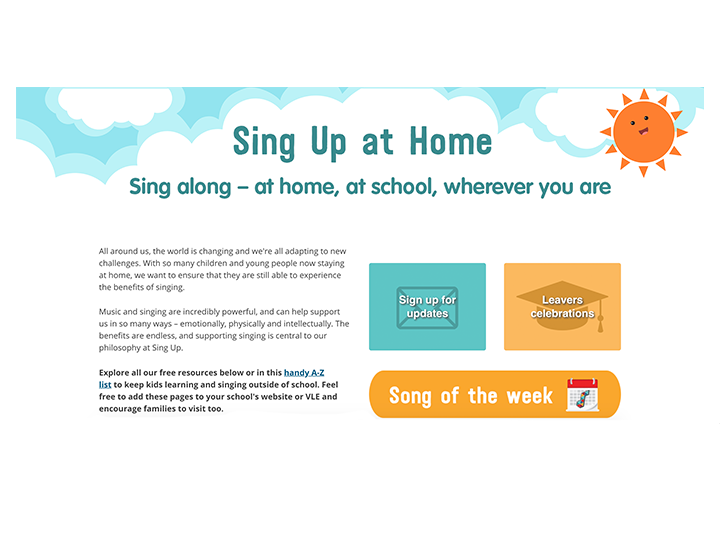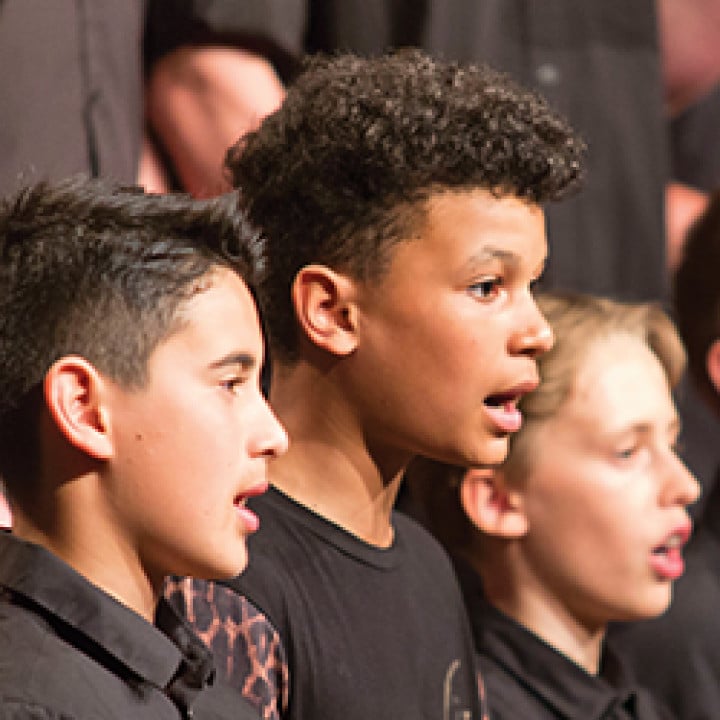
Ever wanted to savour and share those special singing moments? Well, with a little preparation you can easily record a live concert, a Big Sing or a choir session. Recording singing is a fantastic way to teach about the world of music technology and production, and it can give your singers a real chance to shine too. Read on for top tips from some of our experts to help get your recordings sounding really great!
Before you begin
For both concert performances and recording sessions, there is some preparation to do before the day to make sure you get the best out of everyone. “It’s important to plan and prepare carefully,” says Uchenna. “Go through the sheet music and backing tracks you’re going to use and check if there are any bits that might be problematic. If you have access to a recording studio, there is always a lot of time spent on techie things like sound checks and positioning, so you won’t have as much recording time as you might expect.”
Before a session, plan a schedule including breaks. “The order you record songs in can have a big impact on a choir's energy,” says Claire. “I tackle the trickiest song first and save the most upbeat song for last. You could always try recording songs in parts, or tricky verses with a smaller ensemble of your most capable singers.”

Finding space
If you're planning a conventional recording session, before you can sing you need to find the right space, in order to maximise sound quality. “You need a room with as dry and dead and acoustic as possible: no reverb or echo,” says Ron. “Imagine a library, with all those books to absorb any noises – this is the kind of sound you want. Often the untidiest classroom is best!
“To test your room for acoustics, go in when it’s quiet and clap your hands. If the sound rings back at you, it’s a bit too ‘live’. Try to find a carpeted room, as hard floors bounce the sound back,” Ron suggests. Then – you’re ready to record!
Positioning
Our experts recommend getting your choir into a horseshoe shape. “This helps achieve a good quality and blend of sound,” says Ron. “It also helps children hear each other better. If you have access to professional recording equipment, use a ‘studio pair’ of microphones and place them in the middle at a 90 degree angle to each other – one forward to the left, one forward to the right.
“But,” says Ron, “recording with children needs to be as straightforward as possible. Depending on the results you want, you could even use your smartphone’s recording function set straight in front of your choir.”
When recording live performances you can't always control the acoustics of the room, so do your best to position the group as close to the mics as possible, and not too close to the accompaniment!
It’s important to be flexible with your group to get the right blend. “The advantage that a teacher has over a professional producer is that you’ll know the kids' personalities and capabilities really well,” Uchenna says. “The more confident ones can be placed strategically to lead their section.”
Record and listen

“Listen out for pitch accuracy,” Uchenna says, “and words – especially in cumulative songs. It just takes one person to sing the wrong word to spoil the take! It’s vital to have your starting and finishing notes together too, and be picky about pronunciation, especially for songs in different languages.”
It can be a nerve-racking experience for some children, so to keep things cool try some warm-up exercises. “If I see the kids tensing up when that red light goes on I’ll lead some physical warm-ups to relax everyone,” says Claire.
Remember, extraneous noises can ruin an otherwise brilliant recording – listen out for shuffling feet, coughs, or noises outside of the recording room. You may also want to display the lyrics clearly rather than use print outs, as any rustling papers will be picked up by the mics too. Get several takes of the song and choose the best one, treating each recording as a performance, even if you don’t have an audience in the room. A choir that is looking up, smiling and enjoying their singing will always sound better.
Editing
Once you’ve finished, save your work as an audio file. You could take it further and enhance the sound in audio-editing software such as GarageBand or Audacity – here you can add in the backing track if you're not using live accompaniment.
So, if you've never considered it before, get recording and sharing!



